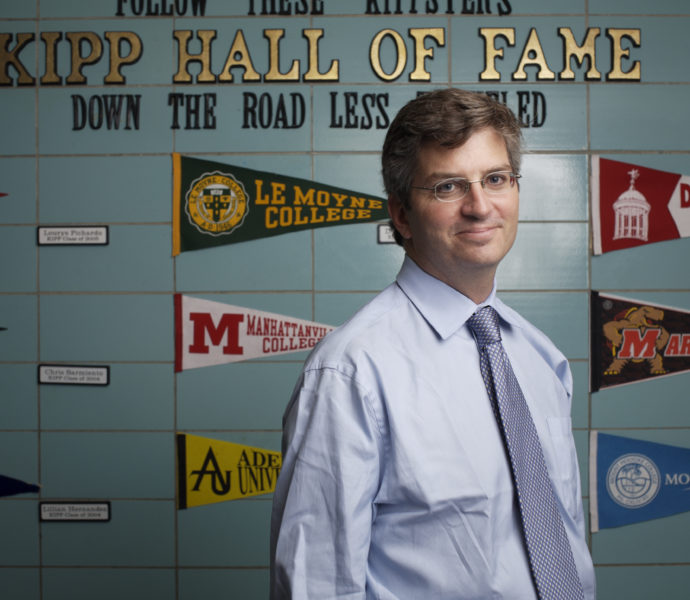Lessons in flexibility from the nation’s largest charter school network

Read the full article at WashingtonPost.com >
Richard Barth has led KIPP, the nation’s largest and most successful charter school network, for 12 years, but hardly anyone has heard of him. His only claim to celebrity is his marriage to Wendy Kopp, the well-known founder of Teach for America.
Barth, 51, seems to like it that way. He has spent his life managing efforts to raise academic achievement, particularly in low-income neighborhoods. Understanding why KIPP, with 209 schools and 88,000 students, has become so important requires a close look at what he has done since he became chief executive in 2005.
The most effective public schools, both traditional and charter, work because their creative teachers are given more support and time to do their jobs. But that success also depends on altering course when initial approaches break down. Barth’s story shows how that happened with KIPP.
In college, he ran a tutoring program for low-income children. After graduation, he joined Teach for America in its earliest stages. He and other young staff members stayed in Motel 6s as they scoured college campuses for students with talent and top grades willing to teach for at least two years in poor neighborhoods. Today, Teach for America has 56,000 teachers and alumni. Its effectiveness is debated, but many of its educators have started their own successful schools.
Barth thought his new boss, Kopp, was “incredibly focused” and “very mature for someone who was just out of college like me.” He was stunned to realize five years later that he had romantic feelings for her. They now have four children ages 9 to 17 and celebrated their 20th anniversary last Wednesday.
In 1995, Barth decided to separate work and love. He switched to an after-school teaching program, and then to Edison Schools, one of the first for-profit school management companies. He helped lead the Edison effort to raise achievement in low-performing Philadelphia schools, but old habits and regulations stymied progress. When KIPP co-founders Dave Levin and Mike Feinberg asked him to lead their nonprofit network of charters that set their own rules, he jumped at the chance.
Feinberg and Levin had created longer school days and years, higher standards for teachers and principals, more teamwork, more music and classroom games, more reading, and firm rules for behavior. When Barth arrived, the 45 KIPP schools were getting rave reviews. Eventually, independently funded research found KIPP significantly raising middle-schooler achievement.
But what Barth also saw was division and exhaustion. He reorganized KIPP into regional clusters, each with a board and an executive director to handle the planning, fundraising and administrative details cutting into principals’ time.
Barth led a second big adjustment. He pushed the opening of pre-K, elementary and high schools to turn what had been a middle-school network into a K-12 system. KIPP middle schools would no longer have to struggle with new students far below grade level and could send their graduates to high schools committed to college for all. That led to less grueling schedules for teachers.
Barth organized a third initiative. Once KIPP students got to college, “they were struggling,” Barth recalled. A new KIPP Through College staff stayed in touch with alumni until college graduation. KIPP also pursued partnerships with colleges willing to provide more support.
There is more. College graduation is not enough. “What we are going to do next is figure out . . . where are the jobs and not just jobs but jobs that pay well and are rewarding,” he said.
That too seems a stretch, but Barth is stubborn. Eventually, he’ll find a way to measure that and we’ll see.
